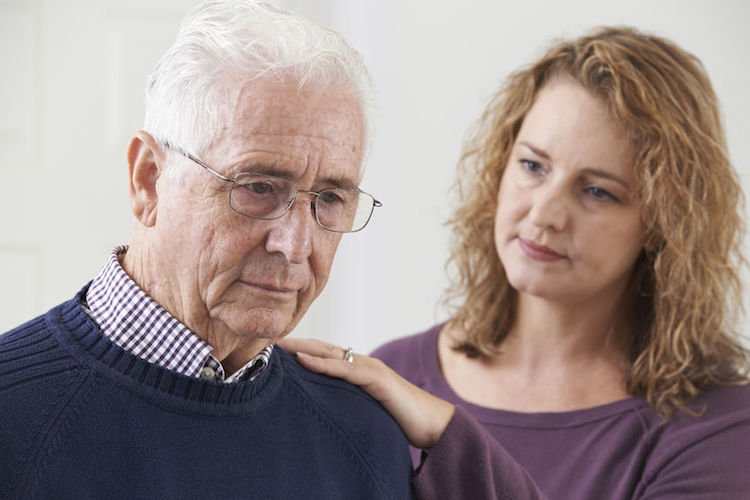Parkinson’s Disease is a progressive neurological disorder that affects many seniors and can significantly alter the quality of their lives. There is currently no cure for the disease, but there are treatment options that can help to alleviate symptoms for those who are suffering. In this article, you will learn about what Parkinson’s Disease is, including its causes, symptoms, diagnosis, and treatment.
About Parkinson’s Disease
The disease begins in the brain but affects the entire body. There are a few different factors that are responsible for the onset of the disease. The first of which is a shortage of dopamine. The lack of dopamine leads to abnormal nerve-firing patterns in the brain which result in impaired movement.
Loss of nerve endings that produce a neurotransmitter called “Norepinephrine” can be responsible for certain symptoms such as fatigue, postural hypertension or irregular blood pressure.
The fundamental changes in the brain that linked to Parkinson’s disease and Parkinson’s disease dementia are abnormal microscopic deposits which are called “Lewy bodies.” They are composed of a protein widely found in the brain, but the function of these deposits is not yet known.
Researchers believe that Parkinson’s disease is the result of both environmental and genetic factors. They hope that the discovery of genes will help to find new ways of treating it.
The average age in which the disease appears in adults is 60 and the risk of developing the disease rises with age.
Parkinson’s disease is progressive and chronic. After onset, the symptoms continue to worsen. The sufferer can get to a point where they find great difficulty in walking, moving around and performing simple tasks.
Parkinson’s Statistics
According to the Parkinson’s Disease Foundation (PDF), up to one million Americans are currently living with Parkinson’s and more than 60,000 are diagnosed with the disease each year. Men are also more likely to develop Parkinson’s than women.
Medication costs for individuals with Parkinson’s Disease total $2,500 per year on average, and surgery can cost as much as $100,000.
Symptoms
There are numerous symptoms which are indicators of Parkinson’s disease. Examples of these are:
- Tremors which usually begin in the hands and progress to the arms.
- Tense and contracted muscles leading to stiffness and rigidity in the arms, legs, or neck
- A slowdown in movements which could include delays in beginning them, stoppages, tiredness, and difficulty performing two separate movements at once.
- Problems with posture and balance which could lead to issues with walking.
There are some other symptoms that could also accompany Parkinson’s such as anxiety, cognitive issues, trouble chewing and swallowing, difficulty sleeping, fatigue and overall pain.
How is Parkinson’s Disease Diagnosed?
It ‘s hard to diagnose the disease because there are no direct blood or lab tests that can do so directly. In many cases, some symptoms may be confused with those of the standard aging process or may be attributed to something else. In many cases, it will take some time and observation to diagnose Parkinson’s Disease correctly.
CT scans and MRI’s of those who have the disease usually appear healthy. The FDA has approved a newer imaging technique which is called “DaTscan” which will detect signals which are related to dopamine function and can diagnose the presence of Parkinson’s with greater accuracy. Many of the signs and symptoms of Parkinson’s can overlap with other diseases, but different diseases require different treatment. Getting the proper diagnosis is important.
Treatment for Parkinson’s
Although there is no cure for the disease, there are measures that can be taken to alleviate some of the symptoms and help those who are suffering.
Medications
Levodopa is the first medication taken. The nerve cells use it to create dopamine to replenish the dwindling supply in the brain. Levodopa is usually taken with another medication called Carbidopa which delays the conversion of Levodopa to dopamine until it reaches the brain to prevent side effects. Levodopa does not cure Parkinson’s disease, but it is very effective in lessening the symptoms.
Other drugs can also be used to treat Parkinson’s disease, including:
- MAO-B inhibitors
- COMT inhibitors
- dopamine agonists
- Amantadine
Non-Medication Therapies
Deep Brain Stimulation (also referred to as DBS) can help the symptoms of a sufferer by implanting an electrode into part of the brain. The electrode connects to a pulse generator and painlessly stimulates the brain and contributes to reducing many of the symptoms associated with Parkinson’s such as rigidity and tremors. DBS can also lessen the need for medications which could potentially cause side effects.
It does not appear that any specific diet changes or supplements have much of an impact on the disease but making healthy choices with your diet can be beneficial the same way it would be for anyone else.
Exercise can help by improving flexibility, mobility and overall sense of well-being. Although the effects of exercise on Parkinson’s Disease and it’s progression are not clearly known, strengthening the muscles and introducing full ranges of motion to rigid areas can help to loosen them up. Exercising can also improve balance.
Researchers are always trying to find new treatments for Parkinson’s Disease and eventually, hope to find a cure. If you sense that you have one or more of the symptoms that align with the disease, it is important to make your doctor aware and get a proper diagnosis. Although Parkinson’s Disease can make life difficult for many people, it does not have to mean giving up on all of the things you enjoy.
